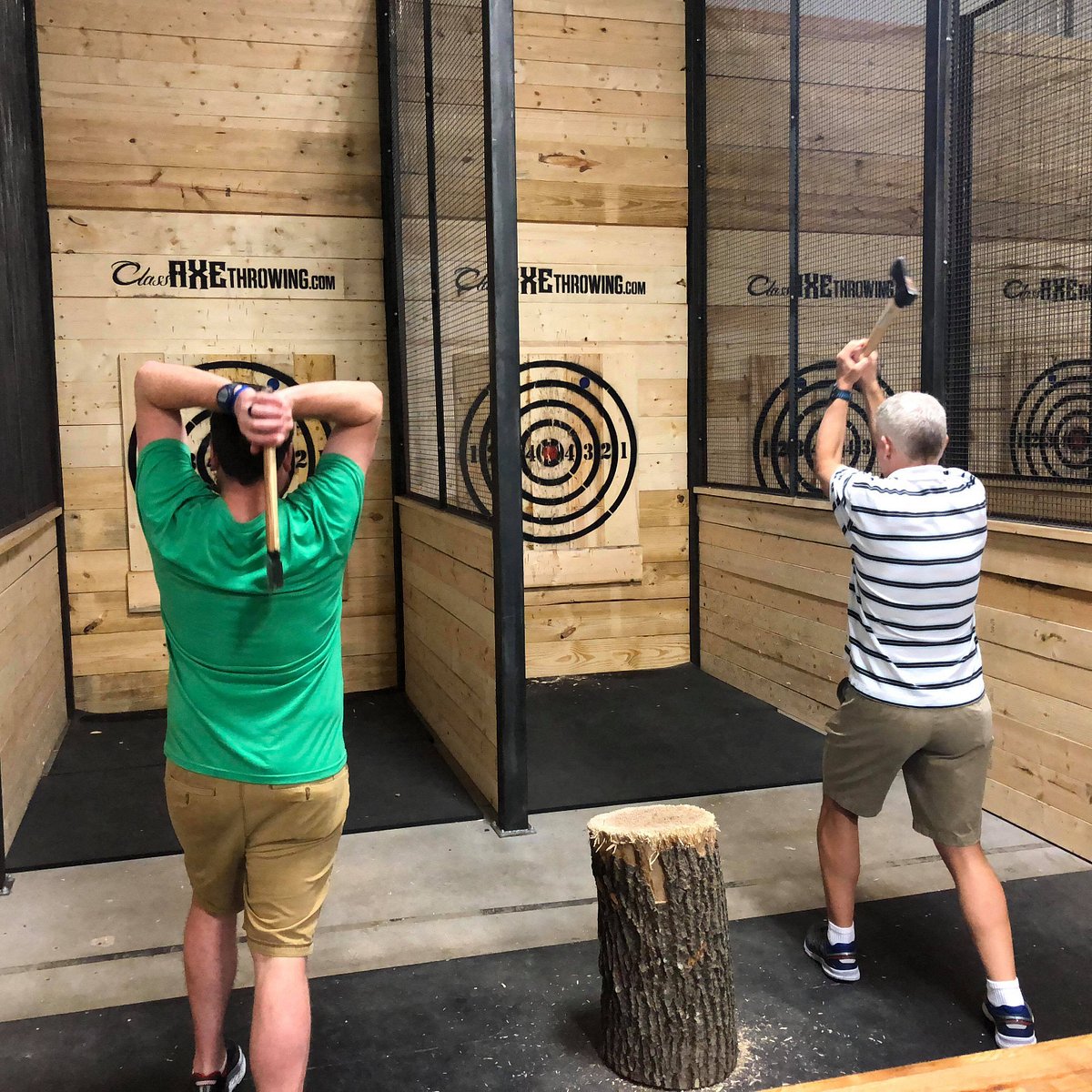Make Memories at Denver Axe Throwing: Tips for a Fun Trip
Make Memories at Denver Axe Throwing: Tips for a Fun Trip
Blog Article
The Enjoyable of Axe Throwing: Just How This Sport Incorporates Skill and Adrenaline for a Fun Time
Axe throwing has arised as a mesmerizing sporting activity that masterfully links the demand for precise skill with the rush of adrenaline, offering participants a distinct and engaging experience. The act of tossing an axe in the direction of a target demands focus and technique, concurrently promoting an environment of friendship and pleasant rivalry.
The Origins of Axe Throwing
Axe tossing, a leisure activity that has gained considerable appeal in recent years, traces its origins back to old times. The earliest records of axe usage in competitive contexts are discovered amongst the Celts and Vikings, that threw axes for sporting activity as well as in fight training.
Medieval European warriors, especially during the Center Ages, exercised axe throwing as component of their martial training. The Francisca, a kind of tossing axe made use of by the Franks, came to be legendary for its deadly precision. This conventional tool was designed to be thrown at opponent shields and shield, showcasing its dual energy in both sport and fight.
In even more current background, axe throwing saw a resurgence in the logging camps of North America in the 19th and 20th centuries. Lumberjacks would certainly take part in pleasant competition, checking their accuracy and strength by targeting at wooden targets. This evolution from a survival ability to a recreational task has led the way for its modern rebirth, with specialized locations and leagues now celebrating the sporting activity internationally.
Equipment You Required
Recognizing the rich background of axe tossing improves the admiration of the sporting activity's modern-day model. Central to this thrilling activity is the equipment, which is vital for both safety and efficiency. The main tool is, of training course, the axe. For competitive and leisure axe tossing, one of the most typically used kind is the hatchet, commonly evaluating between 1.25 to 2 pounds with a manage length of about 16 inches. The axe ought to have a sharp, properly maintained blade and a handle made from resilient wood or composite material, making sure a great grip and balance.
Similarly vital is the target. Guideline targets are built from wood, with softwood ranges like ache or cottonwood being liked for their capacity to hold the axe and take in. The target is generally separated right into 5 concentric circles, each with a specific point worth, to assist in scoring.
Safety and security equipment, though usually forgotten, is critical. Safety gloves can improve grasp and protect against blisters, while closed-toed footwear are a must to shield feet from gone down axes (axe throwing denver colorado). Ultimately, a well-lit, spacious throwing area, full with security obstacles, makes certain a controlled setting where individuals can focus on refining their skills.
Fundamental Techniques Clarified
Understanding the fundamental methods of axe throwing is vital for both safety and efficiency. The initial strategy to recognize is find out here the grip. Hold the axe with a firm, yet kicked back grip, similar to holding a golf club. The dominant hand needs to be positioned directly listed below the axe head, while the non-dominant hand supports completion of the handle.
Your leading foot should be somewhat onward, straightening with your target. This positioning help in preserving security and routing power properly in the direction of the target.
Security First
Making sure safety in axe throwing is vital to developing a enjoyable and injury-free experience. A well-designed axe tossing center features clear separations in between tossing lanes, strong backgrounds to catch stray axes, and non-slip floor covering to stop accidents.
Benefits of Axe Throwing
Axe throwing deals a myriad of benefits that prolong beyond simple recreation. The repeated activity of throwing the axe additionally boosts hand-eye coordination and great electric motor abilities.
Emotionally, axe throwing requires strategy, accuracy, and emphasis, making it an exceptional way to develop cognitive skills. The focus needed to hit the target can act as a type of mindfulness, enabling individuals to clear their minds and reduce tension. This mental engagement can be specifically advantageous in assisting people develop better problem-solving abilities and psychological durability.
Socially, axe throwing is often appreciated in group setups, promoting team-building and camaraderie. Whether as component of a business event or an informal getaway with pals, the sporting activity encourages communication and partnership. Additionally, the common experience of finding out and boosting with each other can enhance connections and learn the facts here now produce lasting memories.
Verdict

The earliest records of axe usage in affordable contexts are discovered amongst the Celts and Vikings, who threw axes for sporting activity as well as in combat training. Launch the axe when your hands are roughly at eye degree, allowing the axe's all-natural turning to direct it towards the target.
A well-designed axe throwing facility functions clear demarcations in between tossing lanes, strong backgrounds to catch roaming axes, and non-slip floor covering to prevent accidents. Participants must be advised on the correct method to manage and toss the axe, highlighting regulated, purposeful activities over strong tosses.
In recap, axe throwing stands out as a sporting activity that masterfully integrates accuracy, skill, and adrenaline.
Report this page